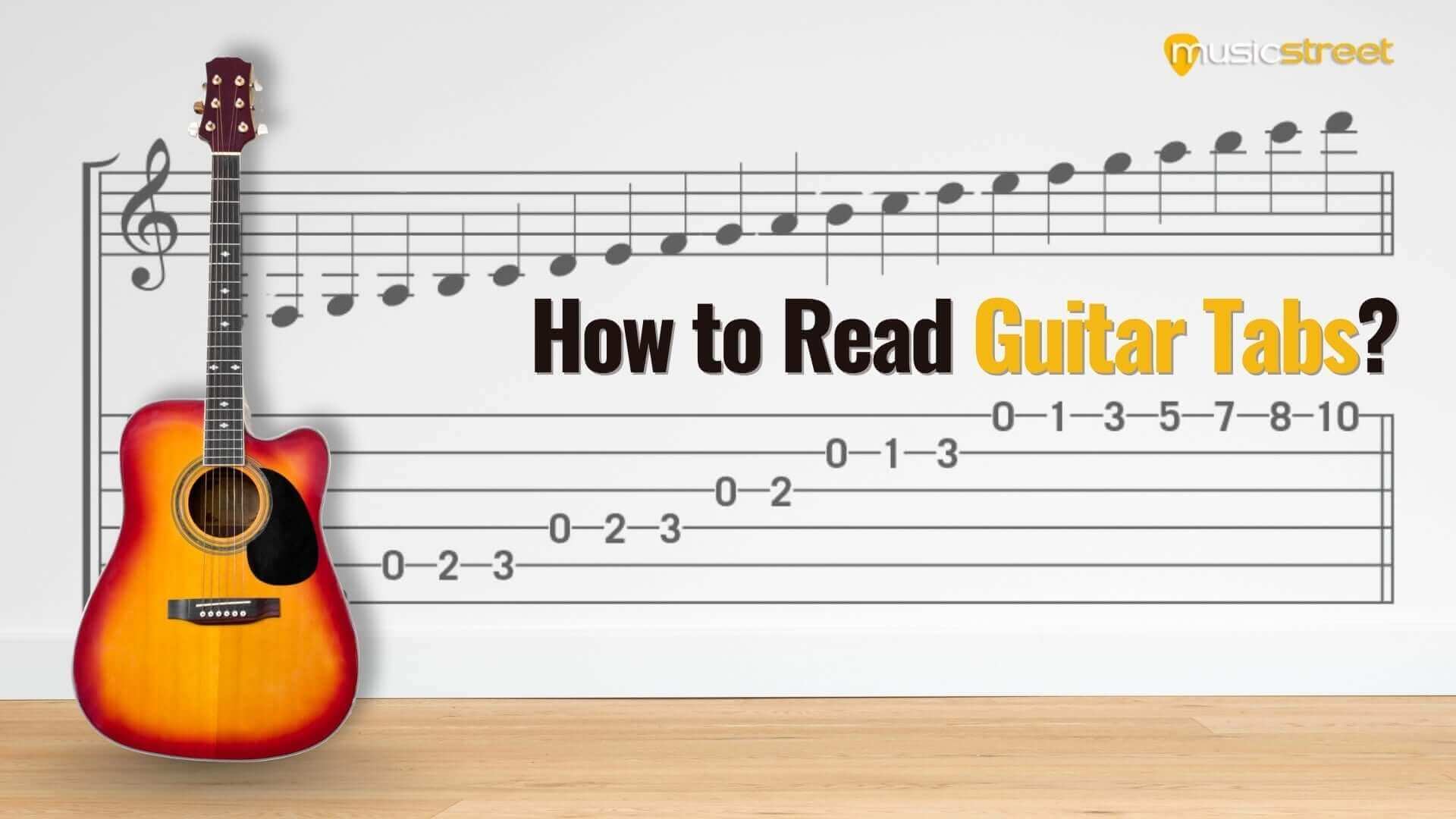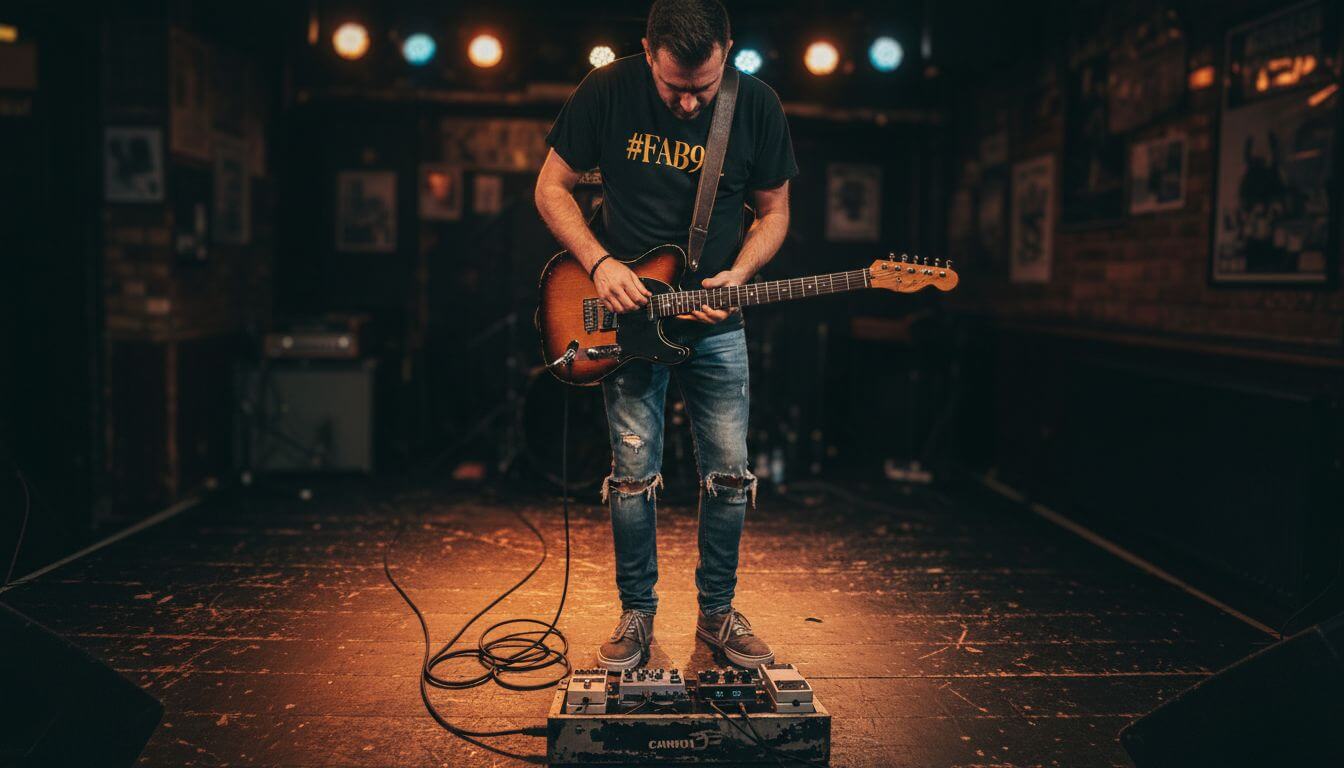For anyone who has just picked up a guitar or wants to quickly play songs without learning traditional music notation, guitar tabs are a powerful tool. Drawing on my 39 years of experience in the musical instrument industry and our team’s boutique approach at Music Street, this beginner‑friendly guide shows you how to read tabs, avoid common mistakes, and practise effectively.
What Are Guitar Tabs?
Guitar tabs - short for tablature - present music visually by showing which strings and frets to use rather than the names and rhythms of the notes. They consist of six horizontal lines representing the strings, with numbers indicating where to place your fingers. Tenstrings Music Institute describes tablature as a way of expressing music on paper that shows how the notes are played - which strings and which frets. Because tabs are about fret positions, they allow beginners to play melodies and riffs quickly without reading standard notation.
At Music Street, we love how accessible tabs make guitar playing so smooth. When your instrument is professionally set up and in tune, the finger positions shown in a tab translate into clean, accurate sounds. That’s why every guitar we sell - from our boutique brands such as PRS, Duesenberg, and Patrick James Eggle to entry‑level models - receives a full workshop setup before it leaves our showroom. Having a properly adjusted guitar eliminates frustrating buzzes and helps your tabs sound like the recordings.

How to Read Guitar Tab Numbers?
Tabs are read left to right, just like a sentence. Each of the six lines corresponds to a string on your guitar. Rock Dojo explains that the bottom line represents the lowest, thickest string, and the top line represents the highest, thinnest string. Keep these points in mind when you encounter numbers on a tab:
-
Each line = a string. The lowest line is your low E string; the highest is your high E string.
-
Numbers = fret numbers. A “3” on the second‑lowest line means you press the 3rd fret on the A string. Tenstrings notes that numbers indicate which frets you press, not which fingers you use.
-
“0” = open string. A “0” tells you to play the string open (no fretting).
- Read from left to right. Rock Dojo emphasizes that you read tabs sequentially, like text.
Knowing this basic layout makes reading tabs intuitive. If you’re ever unsure, our team of practising musicians is on hand (in store or via email/phone) to answer questions - and because we don’t work on commission, you’ll always get honest, practical advice.
Understanding Guitar Tab Symbols
Tabs often include symbols that indicate articulation or technique. Here are some of the most common symbols you’ll encounter:
|
Symbol |
Meaning |
|
h |
Hammer‑on (strike the first note and “hammer” a higher fret with a fretting finger) |
|
p |
Pull‑off (reverse of a hammer‑on; pluck the first note, then pull your finger off to sound a lower note) |
|
/ |
Slide up to a higher fret |
|
** |
Slide down to a lower fret |
|
b |
Bend the string to raise its pitch |
|
~ |
Vibrato (wiggle the string to create a sustained, wavy pitch) |
When you’re starting, don’t worry about mastering every symbol at once. Focus on the basic numbers and strings; you’ll gradually add techniques as you progress.
How to Read Chords and Rhythm in Tabs?
Sometimes numbers are stacked vertically on a tab. Tenstrings points out that when notes are stacked on top of each other, they are played at the same time - this is a chord tenstrings.org. When numbers appear one after another, you play them sequentially as a melody or arpeggio. Tabs don’t usually show rhythm; Rock Dojo notes that many professional tabs pair tablature with standard notation because tabs alone don’t communicate timing. To learn the rhythm of a song from tabs:
- Listen to the original recording to hear the groove and timing.
- Count out the beat (use a metronome or playback software to slow the track down if needed).
- Watch for repeated patterns - chords often repeat every bar or two.
If you want personalized help matching chords to your playing style, our in‑house technicians can adjust your guitar’s action and intonation so that chords ring clearly. We also offer trade‑in options and pre‑owned gear, so players at every level can find an instrument that suits their needs and budget.
Common Mistakes When Reading Tabs
Even simple tabs can trip up beginners. Here are pitfalls to avoid:
- Confusing string order. Remember that the bottom line is the low E string, and the top line is the high E string.
- Misreading fret numbers. Ensure you’re pressing the correct fret; for example, 12 is higher than 2 on the same string.
- Ignoring open strings. A “0” means play the string without fretting.
- Skipping slow practice. Trying to play at full speed too soon leads to mistakes and bad habits. Use a metronome and start slowly.
- Overlooking proper setup. A poorly set‑up guitar can make tabs feel harder than they are. Our workshop adjusts action, intonation, and tuning so you can focus on learning.
Practice Tips to Improve Tab Reading
Consistent practice is the key to turning tab reading into muscle memory. Here are some strategies we’ve seen work for hundreds of players:
- Start with simple riffs. Songs like “Smoke on the Water” and “Seven Nation Army” have memorable, easy‑to‑play riffs. Our guide to Top 10 Easy Songs to Play on Guitar Tabs highlights beginner‑friendly tunes and the guitars that complement them.
- Use a metronome or slow playback. Playing along with a click helps you internalize timing even when the tab doesn’t show rhythm.
- Break songs into sections. Work on one riff or bar at a time; once comfortable, link them together.
- Play without looking at your left hand. Developing muscle memory frees you to focus on rhythm and expression.
- Ask for expert guidance. Our staff are musicians who love teaching. We’re happy to help you choose the right guitar, strings, or accessories to make learning enjoyable.
Frequently Asked Questions
Q1. Are guitar tabs the same as sheet music?
No. Traditional sheet music uses staff notation to represent pitches and rhythms, while tablature shows which strings and frets to play. Tabs don’t communicate rhythmic values, so many songbooks include both standard notation and tabs side‑by‑side. Learning to read simple rhythms (quarter notes, eighth notes) will make your tab playing more accurate.
Q2. Can I learn guitar using only tabs?
Yes, many beginners start with tabs because they provide immediate results. Tabs teach you finger placement and help you play melodies and chords quickly. However, complementing tabs with ear training and basic music theory (such as timing and chord construction) will improve your musicality and allow you to play with others more easily. Our friendly, independent‑minded team can recommend resources or lessons that balance tab reading with theory.




Share:
What Is a Capo? Complete Guide for Guitarists
Celebrating Famous Bass Guitarists Who Shaped Music History